Braun Audio world firsts.
From 1956, Braun, under the design stewardship of Dieter Rams, created many audio firsts: the first all-wave receiver, the first mobile music player, the first wall mounted, integrated sound system, the first stackable Hi-Fi system, now exhibited at MoMA, the first record player with plexiglass cover and the first company to promote better listening experiences.
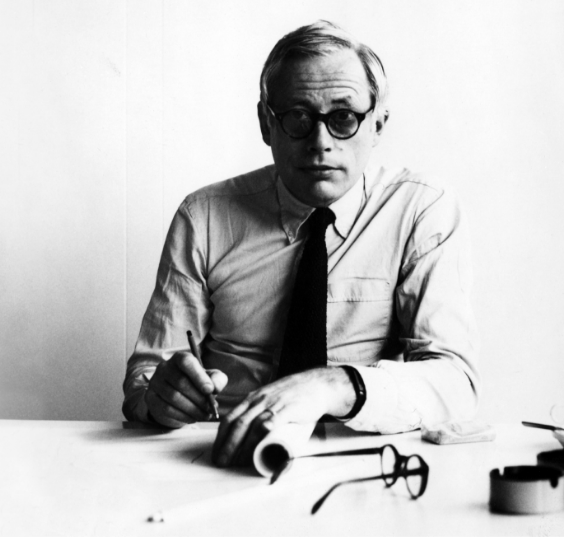
Dieter Rams
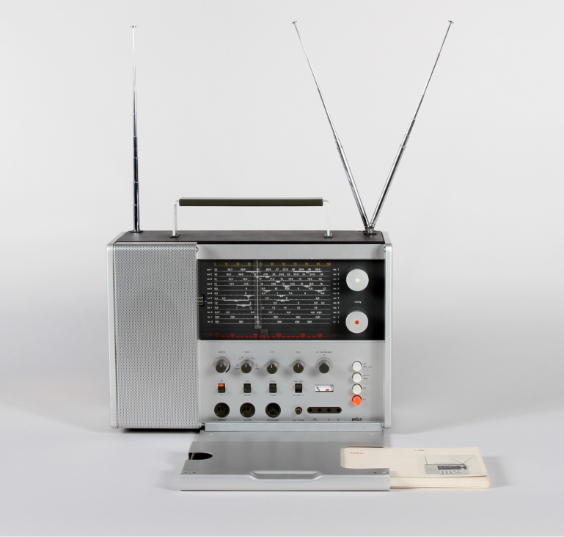
Braun T1000 (1963)
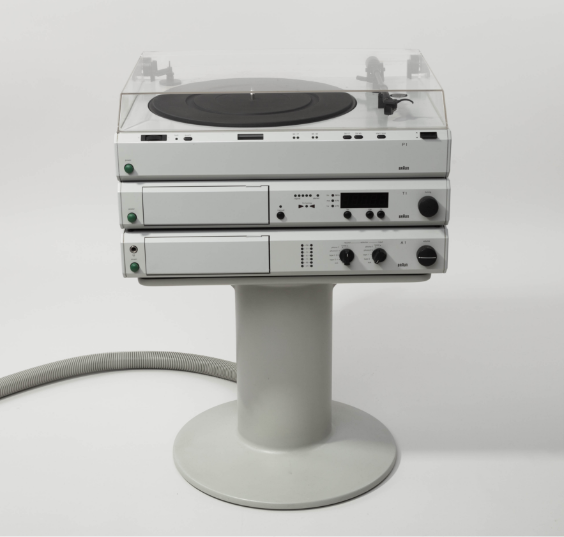
Braun Atelier (1980-1987)
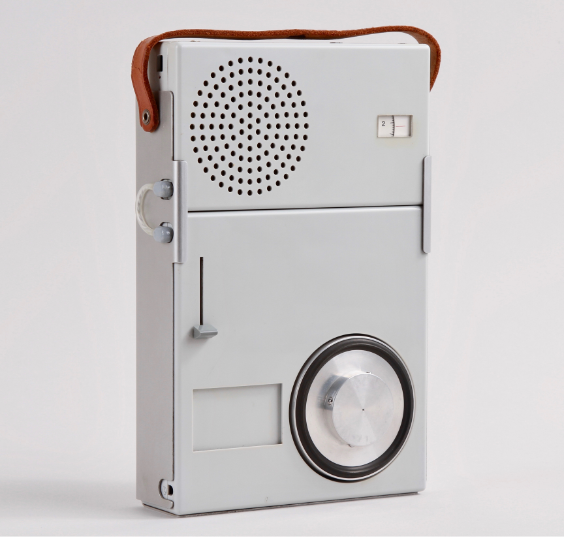
Braun TP1 (1959)
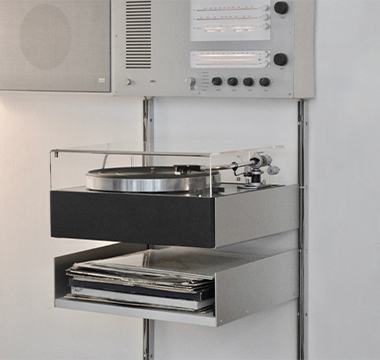
L 450/2, TS 45 and TG 60 (1964)
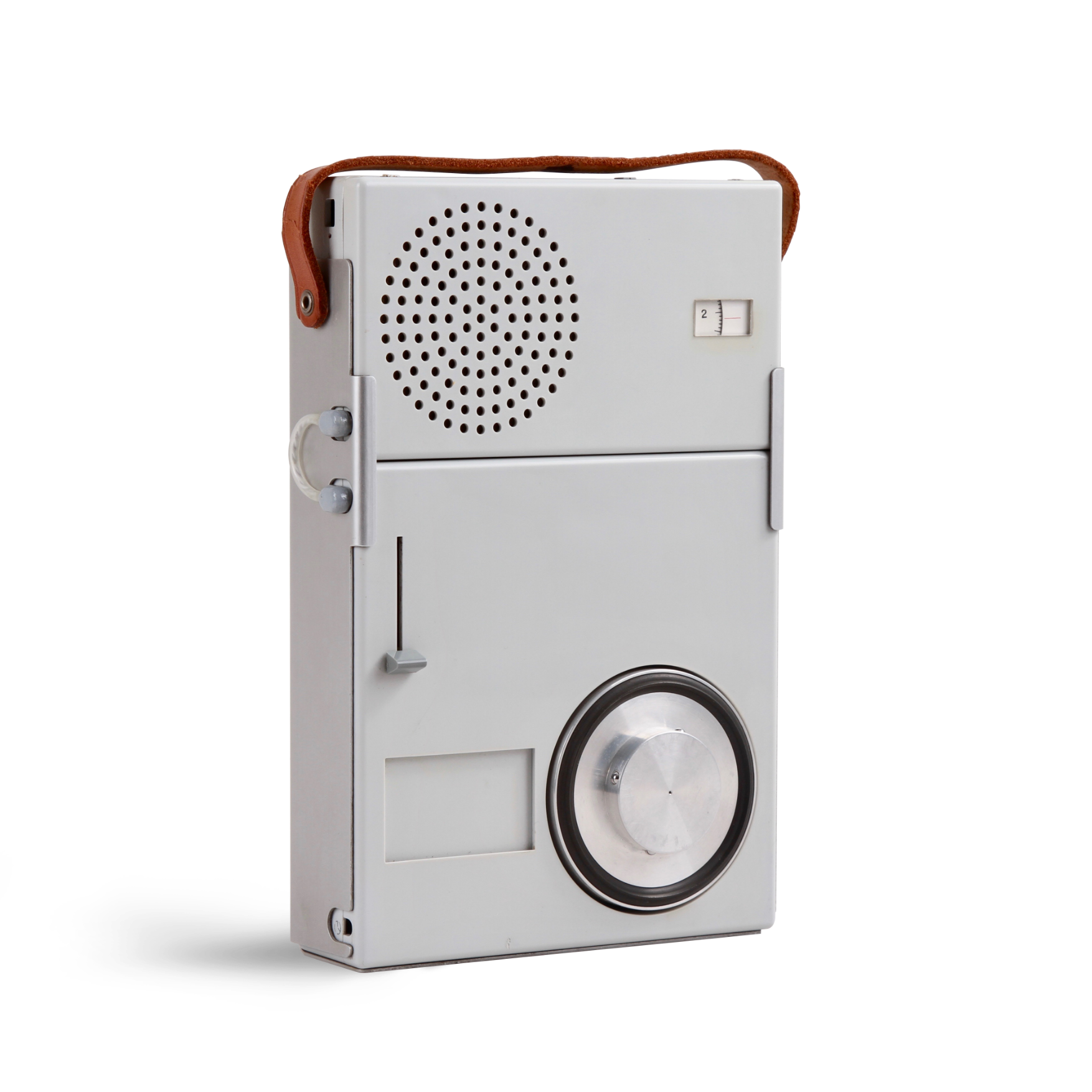
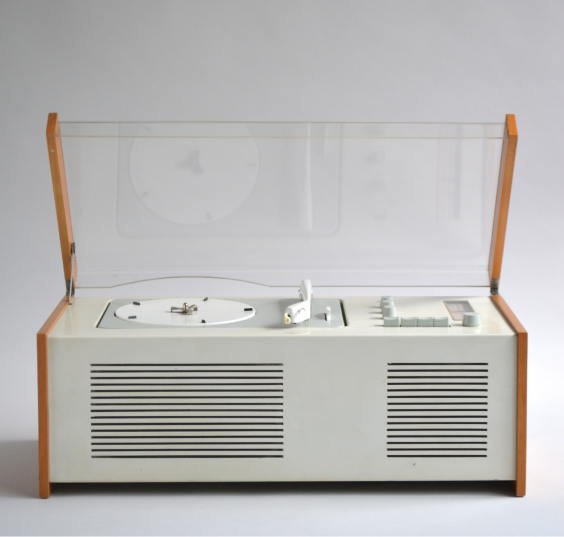
Braun SK4/1 (1957)
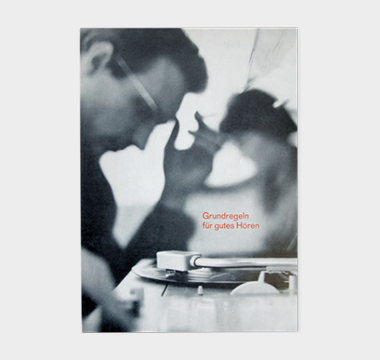
Basic Rules for Good Hearing (1963)

‘Good design is innovative…
Technological development is always
offering
new
opportunities for
innovative design. But innovative
design always develops in
tandem
with innovative
technology, and can
never be an end in itself.’
Dieter Rams
Chief Design Officer
Braun 1961-1995
Braun Audio world firsts.
From 1956, Braun, under the design stewardship of Dieter Rams, created many audio firsts: the first all-wave receiver, the first mobile music player, the first wall mounted, integrated sound system, the first stackable Hi-Fi system, now exhibited at MoMA, the first record player with plexiglass cover and the first company to promote better listening experiences.

Dieter Rams

Braun T1000 (1963)

Braun Atelier (1980-1987)

Braun TP1 (1959)

L 450/2, TS 45 and TG 60 (1964)


Braun SK4/1 (1957)

Basic Rules for Good Hearing (1963)

‘Good design is innovative…
Technological development is always
offering
new
opportunities for
innovative design. But innovative
design always develops in
tandem
with innovative
technology, and can
never be an end in itself.’
Dieter Rams
Chief Design Officer
Braun 1961-1995
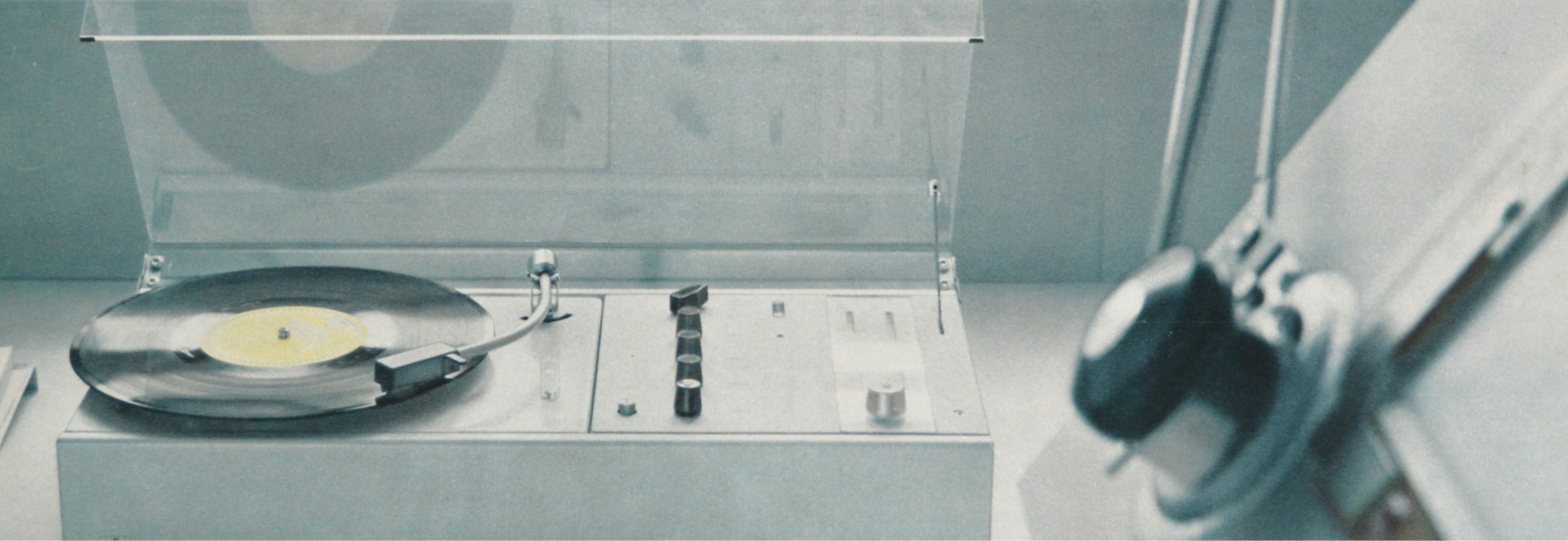
Braun Audio world firsts.
Breakthrough benchmark products from 1956 onwards.
The first all-wave receiver (T1000, 1963).
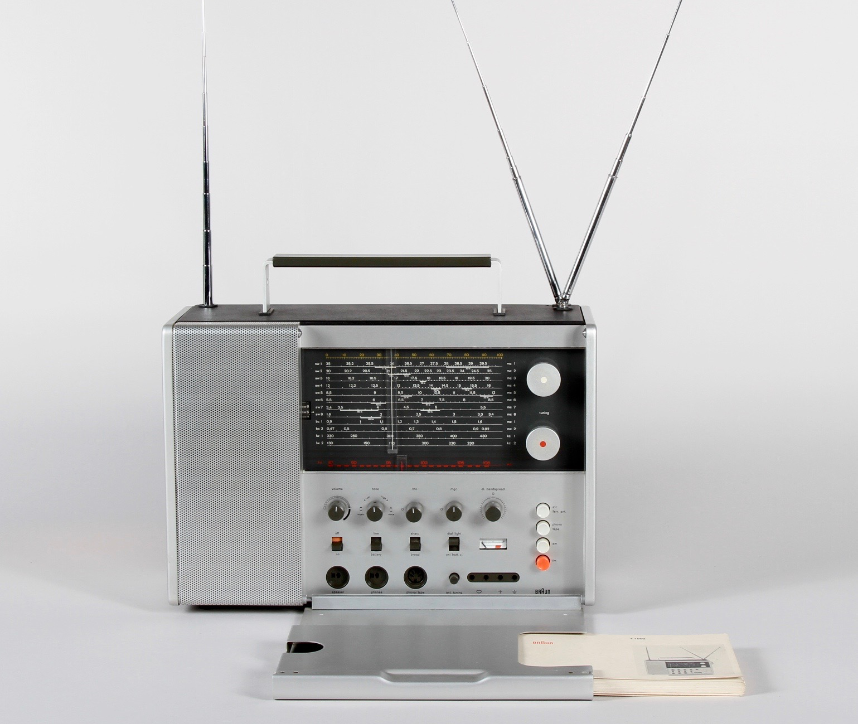
The first radio to receive all transmission frequencies and the last portable radio Braun ever made, the T1000 was remarkable not only for its exquisite use of technology, but for the beauty and precision of its form. Its aluminium casing allowed seamless integration into the home environment and simplicity of use - things previous radio receivers had never managed.
The first mobile music player (TP1, 1959).
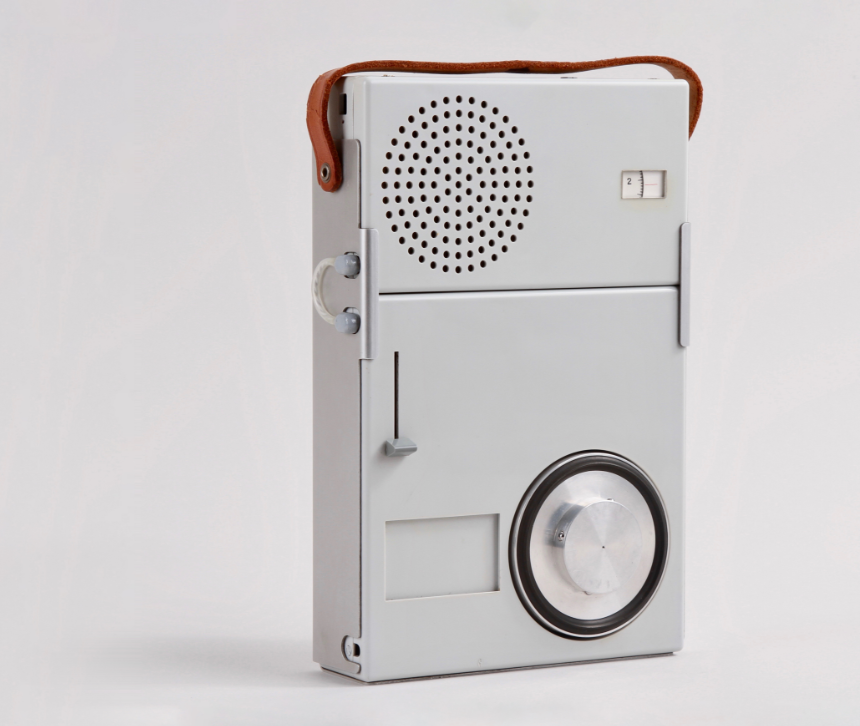
A modular music system that provided users with flexibility and uncompromised sound quality. The TP1 utilized aluminium brackets for holding different components together, a leather carry handle and headphones, providing the first mobile music experience. Long before the Walkman and with design language that inspired the Apple iPod, the TP1 was certainly ahead of its time.
The first wall mounted integrated sound system (L 450/2, TS 45 and TG 60, 1960).
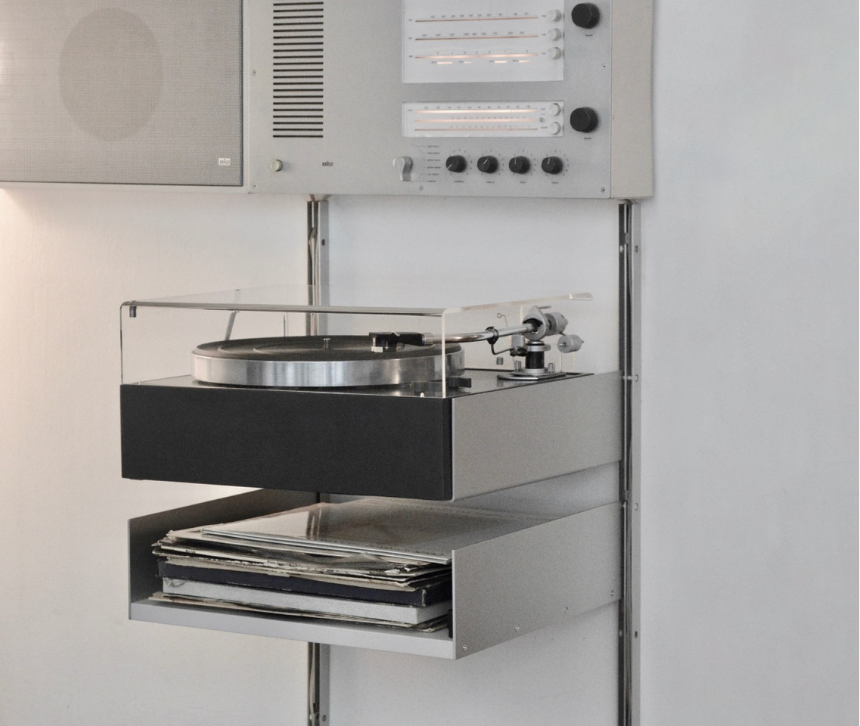
The sound system provided users with ultimate flexibility in sound system design. Enabled by consistent dimensioning, multiple pieces of Braun audio equipment could be mounted on the Vitsœ 606 shelving system in varying arrangements and connected with considered cable management.
The first stackable Hi-Fi system (Atelier, 1980).
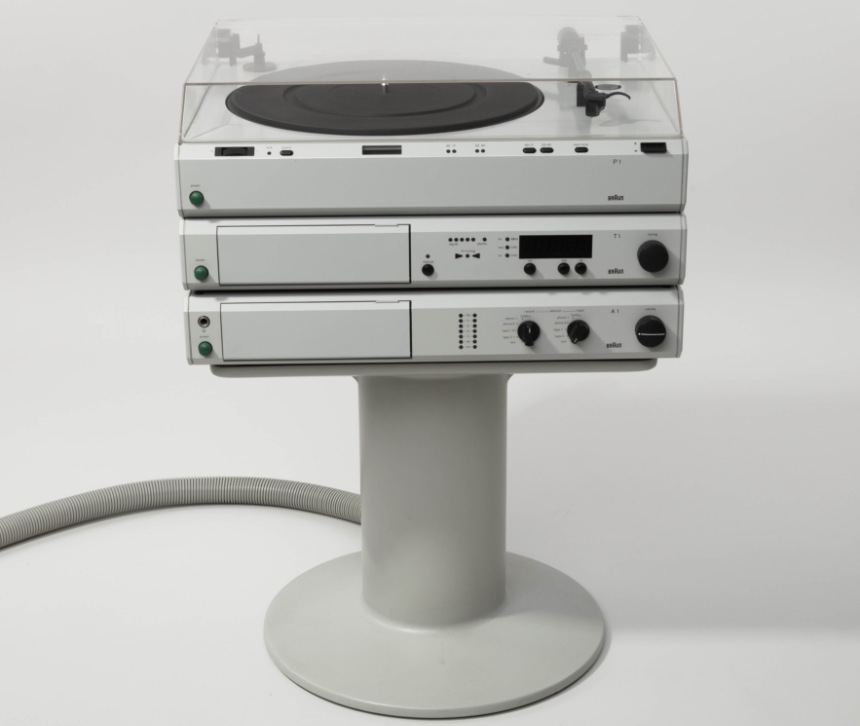
The Atelier system, now proudly exhibited at MoMa, offered a wide range of components for home entertainment, all remote-operated and able to communicate with one another over the entire 10-year period of production. With angled edges, the components appeared slim and unobtrusive and could be stacked vertically or horizontally to suit any domestic environment.
The first music system with plexiglass cover (SK 4, 1957).
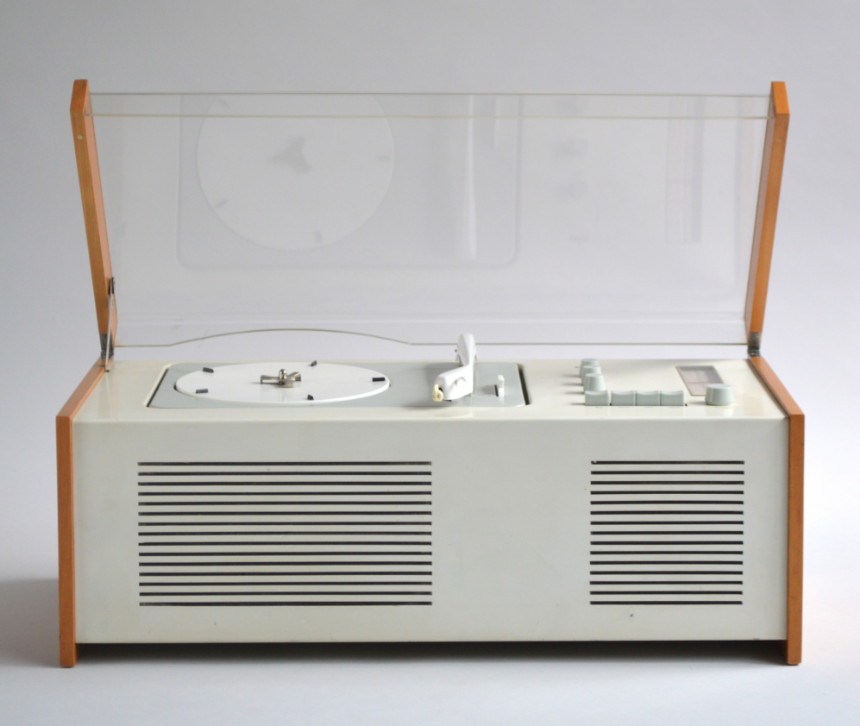
By celebrating the functional componentry with a clear display, the SK4 was set apart from predecessors and competitors alike and set the standard for all record players that followed. The considered approach to controls, aesthetics and materials heralded the beginning of the domestic music system.
The first company to promote better listening experiences.
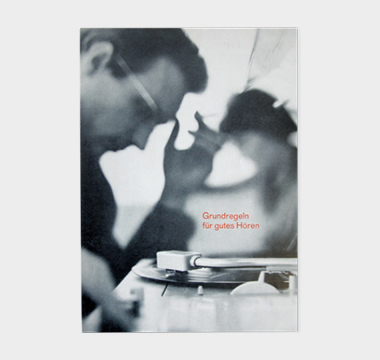
In 1963, Braun released a brochure called 'Grundregeln für gutes Hören' (Basic Rules for Good Hearing), which educated its consumers on the emerging technology of high-fidelity sound and how to best achieve it in their homes. It advised readers on where to place their speakers in the home to optimise listening experiences and the specifix technologies used to accomplish that 'step to perfection.'
The first electrostatic speaker available on the German market.
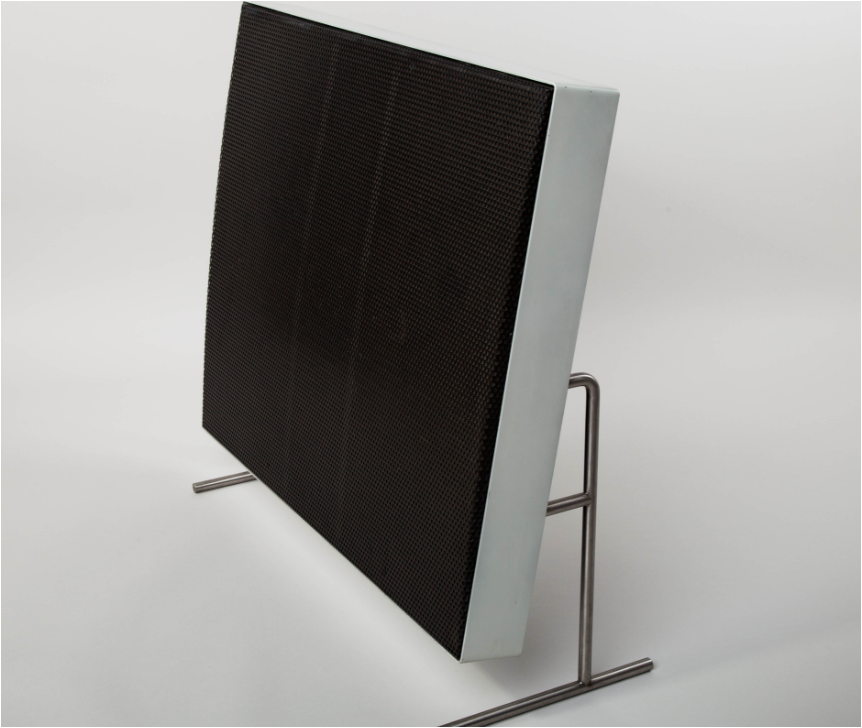
The LE 1 was state-of-the-art at the time and delivered very clear sound quality thanks to innovative lightweight membranes instead of the usual cone shaped ones. Built to accompany the Studio 2 Hi-Fi system, the LE 1 boasted ground-breaking audio technology within a never-before-seen physical aesthetic. One of the key pieces of technological innovation, the lightweight membranes used instead of conventional cones provided distinctively detailed, high-quality sound which could still compete with speakers produced today.